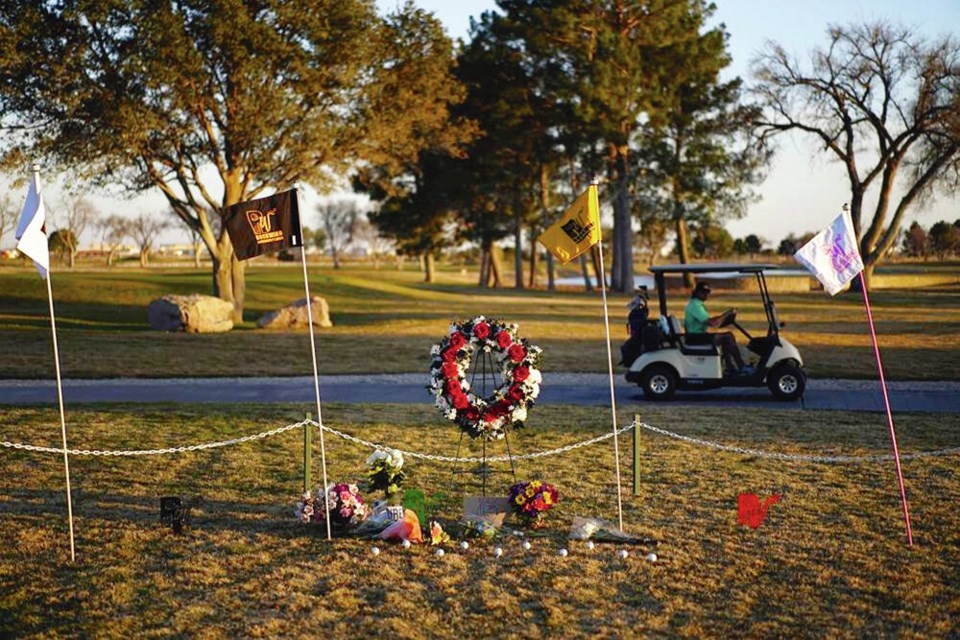I couldn’t help noticing that news feeds over the past couple of weeks had more than their fair share of articles about crashes involving unlicensed drivers.
From Burnaby to New York state to Australia’s Gold Coast, there have been scores of news items, most ending with a horrendous crash, all with one thing in common — the person behind the wheel was unlicensed.
One of the worst examples came last month from west Texas, where a 13-year-old boy driving a Dodge 2500 pickup crossed the highway centre line and plowed head-on into an oncoming van full of university students returning from a golf tournament. The fiery hell that resulted killed nine people and injured several more, including two Canadians.
The preliminary information from the crash investigation indicated that the pickup’s left front tire, which was a spare, had blown out.
A licensed and experienced driver is challenged to the limit of their operating ability in a blowout scenario. An unlicensed 13-year-old would simply have no chance.
Texas law requires that a person be 15 just to apply for their learner’s permit. Why this child was behind the wheel is still under investigation.
It’s happening here, too. Late last year, Burnaby Mounties nailed 10 unlicensed drivers in one night.
All of this reminded me of when I tagged along several years ago to see a mobile advanced licence plate reader (ALPR) being used on the street in real time. I was shocked.
The device literally “pinged” every three to four minutes, alerting the operator to passing vehicles that were uninsured or drivers who were prohibited from driving or unlicensed.
These recent headlines tell me not much has changed.
The reasons why people choose to drive without a valid licence vary. Some people are hard-up financially — the working poor who need a car to earn a living but can’t afford the costs that come with it.
Others get caught up in legal and administrative spirals. Nabbed for not having a licence or vehicle insurance, they forget about the ticket until it’s too late. They become boxed in by administrative or court-imposed penalties that overwhelm them, so they simply ignore the problem.
Then there are those who simply don’t care. Driving is viewed as an entitlement and no piece of blue paper issued by a cop is going to keep them off the road. This seems to be the mindset of the young street racer — driving a high-end car completely beyond their physical and emotional capability.
The problem for the rest of us is having to share the road with these folks, because, simply put, they’re not good drivers.
Studies from the U.S. show unlicensed drivers are responsible for 20 per cent of all crashes. What’s more disturbing is that the unlicensed driver is significantly more likely to be in a fatal collision than a licensed driver.
There’s also been a steady upward trend in the past 20 years for unlicensed and prohibited drivers to be involved in a fatal hit and run.
Another problem for the rest of us happens when an unlicensed driver uses your vehicle.
Operating a vehicle with a valid licence is a condition of your insurance coverage. Unlicensed drivers could be personally liable for any injury or damage they cause in a crash. Worse still, an unlicensed driver operating your car can negate your insurance policy — making you personally liable in the aftermath of a crash.
B.C. has enacted tough laws on this issue. If you’re caught a second time driving without a licence, the car you’re operating is subject to immediate tow-away and a seven-day impound — regardless of who actually owns it.
It might cause an uncomfortable moment, but always be sure the person driving your car has a valid licence.
Improved detection tactics and stricter consequences might be the only answer here, because there are still too many unlicensed scofflaws out there endangering all of us.
Glove Box: Last week, I should have known better than to apply my limited math skills to a problem that required me to convert watts to horsepower. The corrective input from readers was tsunami-like. I used “the google” to determine how much horsepower is in a watt and then applied that to the 500-watt maximum allowed for e-bikes under B.C. law. One watt equals 0.00134102 horsepower. So for the record, a 500 watt e-bike delivers 0.670511 (or 2/3) of a horsepower — not the 1/6 that I mistakenly claimed. Clearly, I’m one of the 4 out of 3 people who can’t apply fractions.



